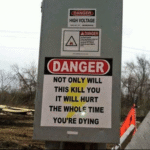Connect people to people for innovation
Connecting people to each other to find more innovation is a great idea to develop sustainable entrepreneurship in our rural communities.
Why do we need innovation?
Innovation matters for entrepreneurs because it’s the spark that sets their business apart and keeps it moving forward. Innovation helps entrepreneurs spot gaps and unmet needs in their community or market, opening doors for new products or services.
Innovative entrepreneurs can reach new customers, adapt to changes, and grow their business, even when the landscape shifts.
The best innovations come from listening to customers and neighbors and tackling real challenges, making life better for everyone involved.
By trying new things and learning from what works (or what doesn’t), entrepreneurs become more adaptable when things get tough.
Here are three ways entrepreneurs are coming together and being innovative.
Message groups

Photo shared by Kristie Kelly
Alena Jennings owns an art experience and education business in downtown Ponca City, Oklahoma. Alena has connected with several other people who also have retail arts- and event-based businesses downtown. They started a text or message group to share with each other about books they’re reading, things they’re learning, events they’re doing, and other ideas they can share. It’s not all business, but most of it is business related. It helps your entrepreneurs to stay in the conversation with like minded individuals so they don’t feel all alone out in the wilderness.
Building Connections like this is essential to keeping up our motivation in rural areas. You may have only one or two peers in your own town, but you can reach across boundaries to connect with people in nearby communities or those who work far away.
This picture is of a text from a friend who works in the electric industry – sometimes you have to have a laugh too!

photo from Deb’s team
Facebook groups
Some groups, like my fellow graduates of the US Chamber’s IOM program, gather online – in a Facebook group. It’s private, easy to use and convenient.
When we received our certification back in 2017, we had positions in chambers, organizations and economic development. This group has more entrepreneurs now – the ongoing encouragement helped many of us go into business for ourselves. We still pose questions, share stories of things we are doing and learn new things.
Groups gather in person

Photos by Greg Lakes
On a visit to Jackson County, Kentucky, I found out there were a large group of artists and crafters and had not really figured out how to come together. The first step I encouraged was to set up at an art fair during the annual car show. One woman volunteered her empty lot. Another person started texting people she knew to come visit about it. And like a snowball going downhill, it took off. The event was a success. And after the event they wanted to keep working together on other projects and promotions. So they gathered at a local art studio, or the Mexican restaurant and started talking about possibilities. All of these artists were entrepreneurs trying to find ways to sell their art.
Innovation happens when you work at it. And it most often happens in a group of people.
The next project was to put mural boards up around the county. They agreed to have a contest the the middle schoolers to create images to go on the boards. The people voted and 8 or 9 images were chosen. The next step involved actually transferring the designs to the large boards. And inviting the kids to come and paint.
All of this work happened at gatherings of artists. And they talked about many things. Like how to sell your work online. Good places around the county to display art. Fundraising. And more. This group of local artists and a few folks from Berea College meet on a pretty regular basis and talk about art, and ways to get it into the community.
Would you like to receive a weekly, free newsletter that covers rural challenges and solutions? Go to www.saveyour.town/signup
